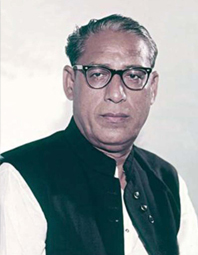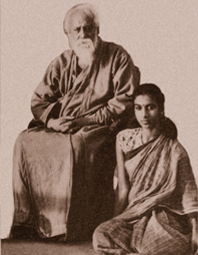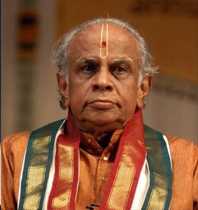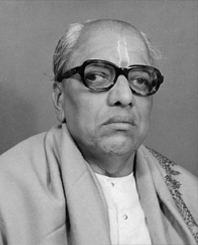COVER STORY - USTAD AMIR KHAN (1912-1974) Music from the soul by DEEPAK S. RAJA

Ustad Amir Khan was easily the single most influential Hindustani vocalist of the 20th century. He was a rare musician, whose music deeply influenced his contemporaries and, more than forty years after his demise, continues to shape the dominant tendencies in vocal, as well as instrumental music. An eclectic, who enriched his basic grooming with several other influences, he set standards of musicianship that have yet to be bettered. With no interest in accumulating audiences, wealth or rewards, he represented the essence of the Indian tradition, which regards music as a mystical pursuit, with spiritual evolution as its primary reward. He sang for himself, and drew his listeners into a trance. Amir Khan died in a car accident on 13 February 1974. It is a sad commentary that he remained one of the least honoured greats of 20th century Hindustani music. A Fellowship of the Sangeet Natak Akademi and the Padma Bhushan had been his only decorations. Childhood and grooming Amir Khan was born Amir Ali at Akole (Maharashtra) on 15 August 1912, and was brought up in Indore, where his father, Shahmir Khan served the princely court as a sarangi player. Young Amir Ali began his training in vocal music and the sarangi at an early age.
SPECIAL FEATURE - Tribute to Tagore

The 150th birth anniversary of Rabindranath Tagore was celebrated on a grand scale in May this year across the globe. Born in 1861, Tagore was the first Asian to win the Nobel Prize in 1913 for his book of poems titled Gitanjali. Tagore enriched Indian culture and literature as a poet, novelist, musician, and playwright from the second half of the 19th century to the first half of the 20th century. He continues to be a household name in eastern India and Bangladesh and the popularity of his works is undiminished. The bard holds the unique distinction of composing the national anthems of two nations – India and Bangladesh. The celebrations were flagged off last year in different parts of the country. India’s highest denomination commemorative coin was released on 9th May 2010 at New Delhi by the Finance Minister to mark the occasion. Coins in two denominations – five rupees and 150 rupees – were made available in a beautiful presentation set. The government announced a number of initiatives. These included an award, Tagore fellowships to encourage research on the poet-artist, and the proposed revamping of existing Rabindra Bhavans. A joint celebration by India and Bangladesh was launched on 7 May this year at Dhaka in the presence of top national leaders of the two countries.
MAIN FEATURE - ADYAR K. LAKSHMAN (Part 2) An old friend and colleague by C.V. CHANDRASEKHAR

Krishnaraja Rao Lakshman Rao would have been the official name of this unknown youngster if he had had a passport in the 1940s. The passport he probably had for a trip to the erstwhile Soviet Union to accompany our teacher Sarada Hoffman on the mridanga in 1956 must have had his name as K. Lakshmana or K. Lakshman Rao. Eventually it became a more stylish name when he embarked on his own mission to pursue Bharatanatyam and dedicate his life to the art, not forgetting the prefix of Adyar (for Kalakshetra which groomed him as a dancer, nattuvanar, vocalist and mridangist. Lachu and I have been close friends since 1945, the year I joined Kalakshetra and the Besant Theosophical School. We learnt vocal music and dance together, along with D. Pasupathi and Lachu’s illustrious brother K. Rama Rao. Lachu and I were the first students allotted to the class of the one and only M.D. Ramanathan when he was appointed as a teacher in 1953. Earlier we were under Sangita Kalanidhi Budalur Krishnamurthi Sastri for eight years and prior to that with vidwan T.K. Ramaswamy Iyengar. We were thus exposed to three different methods of teaching. Whenever time permitted, I also attended the pallavi classes of Mudicondan Venkatarama Iyer along with Lachu, Ramu, Pasupathi and Mani Krishnaswami. We learnt Bharatanatyam mainly with Sarada Hoffman and S. Sarada. We had the good fortune of interacting with stalwarts and masters like Karaikudi Sambasiva Iyer, Mysore Vasudevachar, Tiger Varadachariar, and the Kathakali masters Ambu Panicker and Chandu Panicker.
REMEMBERING - M.D. RAMANATHAN (1923-1984) Vocalist of inimitable style by K.K. GOPALAKRISHNAN

From Manjapra, one of the most picturesque villages of Kerala in Palakkad district, with its rich tradition of folk arts, there emerged a maestro of inimitable style who breathed only music and surprisingly became dearer to music aficionados after his demise. This is a tribute to M.D. Ramanathan 25 years after his death. Krishnamurthy, an ardent fan of MDR, is a retired school teacher settled in Tripunithura, the cultural town of Kochi. Ever since the demise of legendary vocalist M.D. Ramanathan, Krishnamurthy’s annual rites for his father, who died when he was a teenager, are only complete with rites for MDR too. Krishnamurthy listened to MDR’s live concerts only on five occasions during his post-high school years, but he spent his life savings on collecting recordings of MDR wherever they were to be found; today it is believed that he has every available recording of MDR. His years of research into the music and life of MDR finally led him to write a Malayalam novel on MDR with the title Kedaram, one of the favourite raga-s of MDR.


